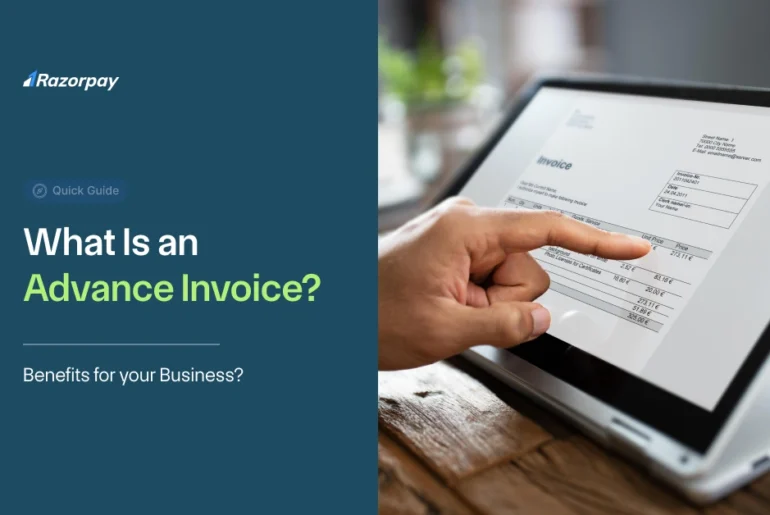For any business, whether you’re a freelancer, a small business owner, or part of a corporate finance team, understanding the difference between net and gross invoices is key to smooth operations. These two types of invoices impact how you present prices, calculate taxes, and communicate payment expectations.
Put simply, a net invoice shows the base amount payable before taxes or deductions, while a gross invoice reflects the full amount due, including all taxes and fees. Knowing when and how to use each invoice type can improve your financial clarity and keep your business compliant.
Let’s dive into the details.
Table of Contents
What Is a Net Invoice?
A net invoice refers to an invoice that displays only the base amount for goods or services, excluding any taxes, fees, or deductions. This format is especially common in B2B transactions, where tax amounts are handled separately.
Businesses frequently use net invoices when dealing with suppliers or other businesses. For example, a net invoice for consulting services might show just the service cost, leaving the buyer responsible for calculating and adding applicable taxes like GST or VAT separately.
This separation helps streamline tax reporting and makes financial tracking more transparent for accounting teams. Understanding how net invoices work is fundamental when managing tax invoices and other detailed billing documents.
What Is a Gross Invoice?
On the flip side, a gross invoice includes the full amount payable by the client, incorporating the base price along with taxes, fees, and any additional charges. This invoice type is commonly used in B2C sales, such as retail or direct service industries, where customers expect to see the final price upfront.
For example, a gross invoice might list:
- Base Price: ₹50,000
- GST (18%): ₹9,000
- Total Payable: ₹59,000
This clear breakdown helps customers understand exactly what they owe without extra calculations, making gross invoices ideal for consumer transactions.
Gross invoices provide full transparency in pricing, which is especially important in retail and service sectors that often issue commercial invoices to consumers.
Key Differences Between Net and Gross Invoices
Here’s a side-by-side comparison to highlight the key distinctions:
|
Feature |
Net Invoice |
Gross Invoice |
| Taxes and Fees | Excluded | Included |
| Common Usage | B2B transactions | B2C sales |
| Transparency | Base price shown, taxes separate | Full price, including taxe,s shown |
| Tax Reporting | Facilitates detailed reporting | Easier customer payment process |
| Purpose | Supports tax compliance and deductions | Provides a clear, total payable amount |
Using the appropriate invoice type not only affects how clients perceive your pricing but also plays a crucial role in your tax and accounting practices.
When to Use Net vs Gross Invoices
Choosing between net and gross invoices depends largely on your customer type and regulatory requirements.
- Net invoices are ideal if you sell to other businesses, especially in international markets or industries where taxes are handled separately. This invoice type is common in supplier billing and professional services.
- Gross invoices work best when selling directly to consumers who need to see the total amount payable, including all taxes and fees. This applies to retail, hospitality, and service providers.
Remember, the formula to calculate these prices is straightforward:
Gross Price = Net Price + Taxes (such as VAT or GST)
Net Price = Gross Price ÷ (1 + Tax Rate)
For instance, if you have a gross invoice total of ₹118,000 and the GST rate is 18%, dividing ₹118,000 by 1.18 gives you the net price of ₹100,000.
Understanding these calculations helps you choose the invoice format that best suits your business needs, ensuring both clarity and compliance.
Conclusion
Both net and gross invoices serve essential roles in business billing:
- Net invoices show the base price before taxes and are standard in B2B dealings, allowing for clear tax reporting and deductions.
- Gross invoices present the total amount due, including taxes, improving transparency for consumers in retail or direct service transactions.
Selecting the right invoice type supports financial clarity, regulatory compliance, and enhances communication with clients. Whether you’re preparing an invoice and receipt for a customer or issuing a detailed commercial invoice, knowing these differences helps you keep your books accurate and your clients informed.
Frequently Asked Questions
1. What is the main difference between net and gross invoices?
The main difference is that net invoices exclude taxes and fees, showing only the base amount payable, while gross invoices include all applicable taxes and charges, representing the total amount due.
2. When should I use a net invoice over a gross invoice?
Use a net invoice for B2B transactions, where the buyer manages tax payments separately. Use a gross invoice for B2C sales, where the final price, including taxes, should be clear to the consumer.
3. Can I switch between net and gross invoicing?
Yes, but it depends on your business needs and compliance requirements. Switching between formats should be consistent within transaction types and transparent to clients.
4. How do net and gross invoices impact tax reporting?
Net invoices facilitate detailed tax reporting by clearly separating the taxable base and tax amounts, which is essential for businesses claiming input credits or deductions. Gross invoices simplify customer payment but may require additional internal calculations for tax compliance.



